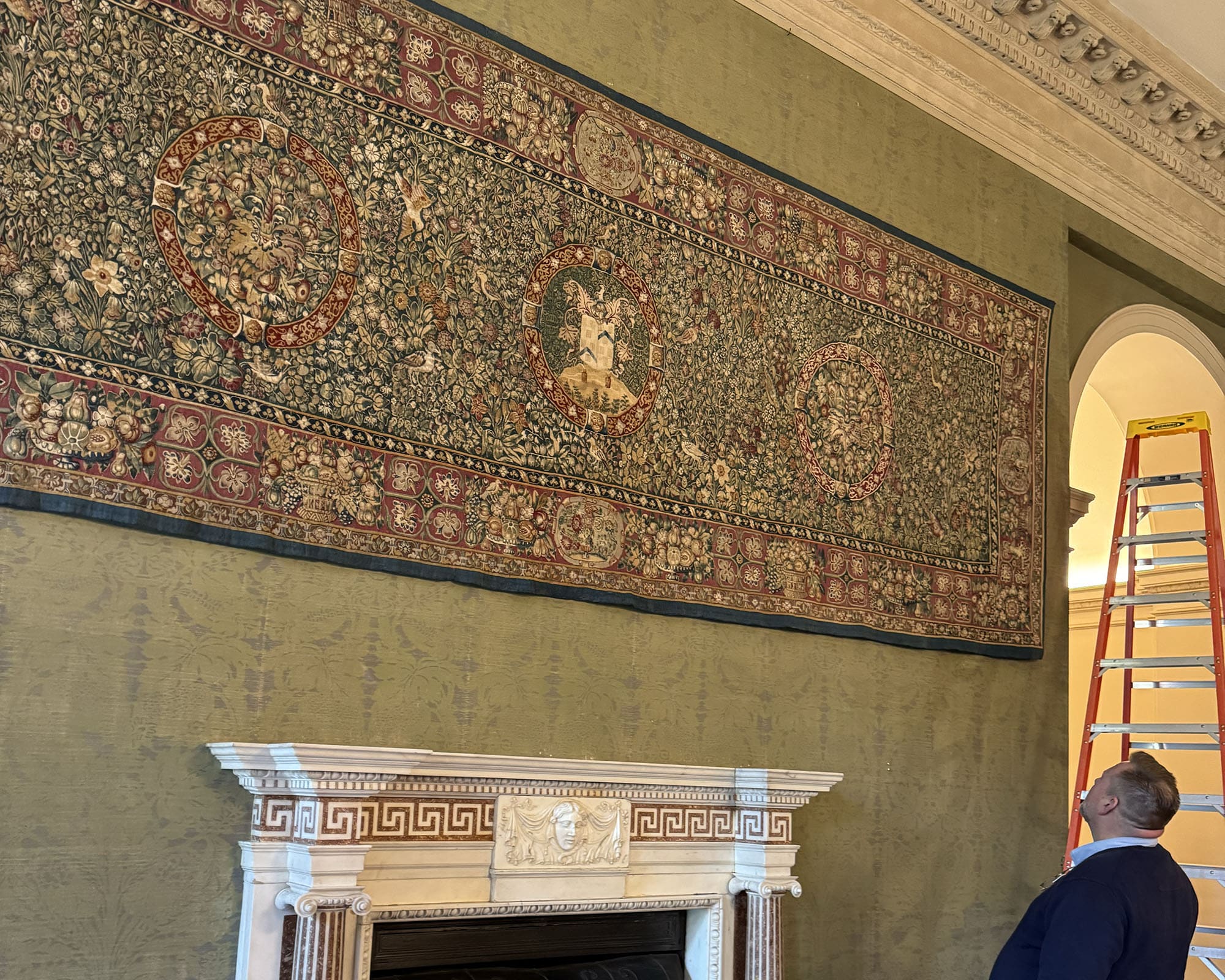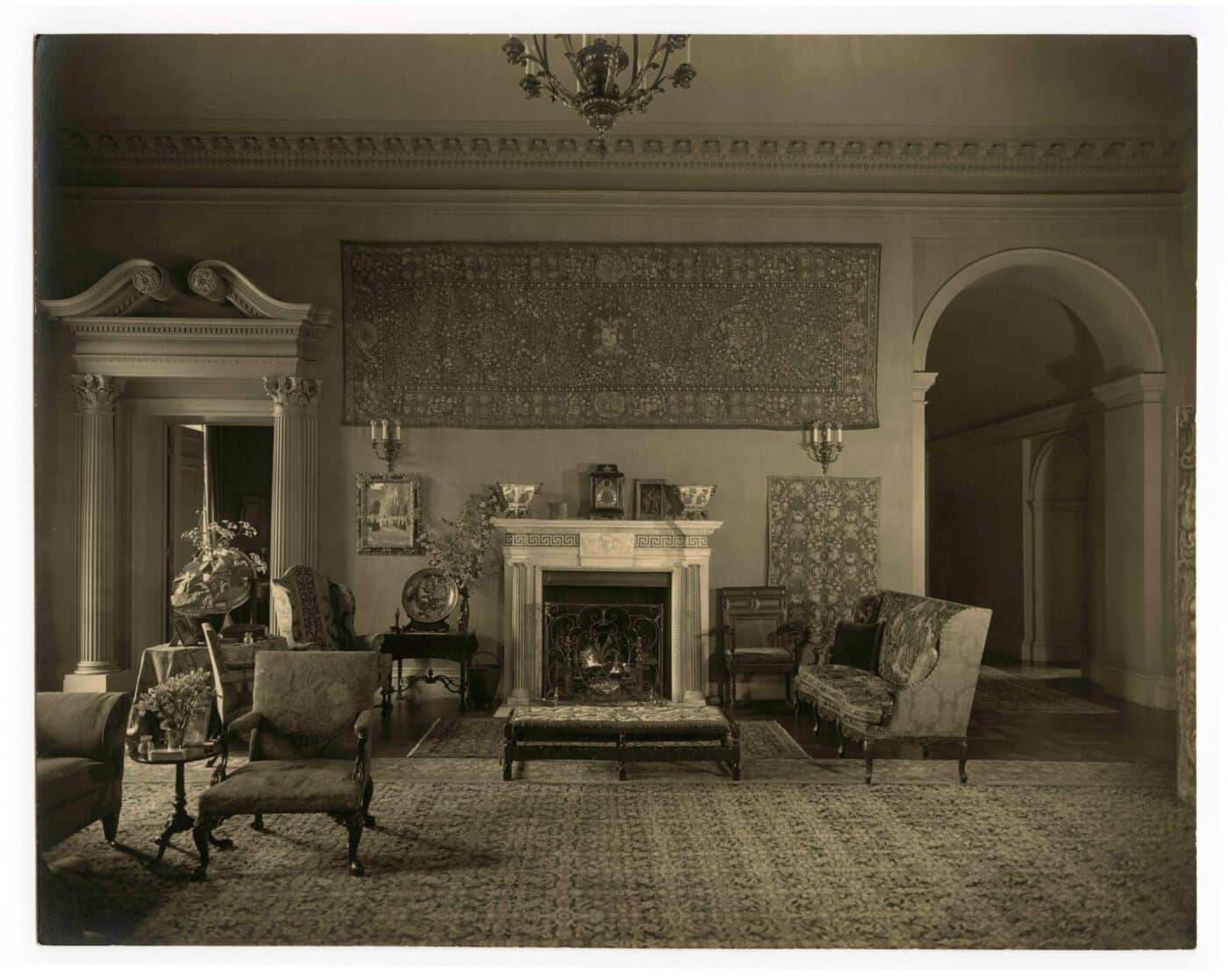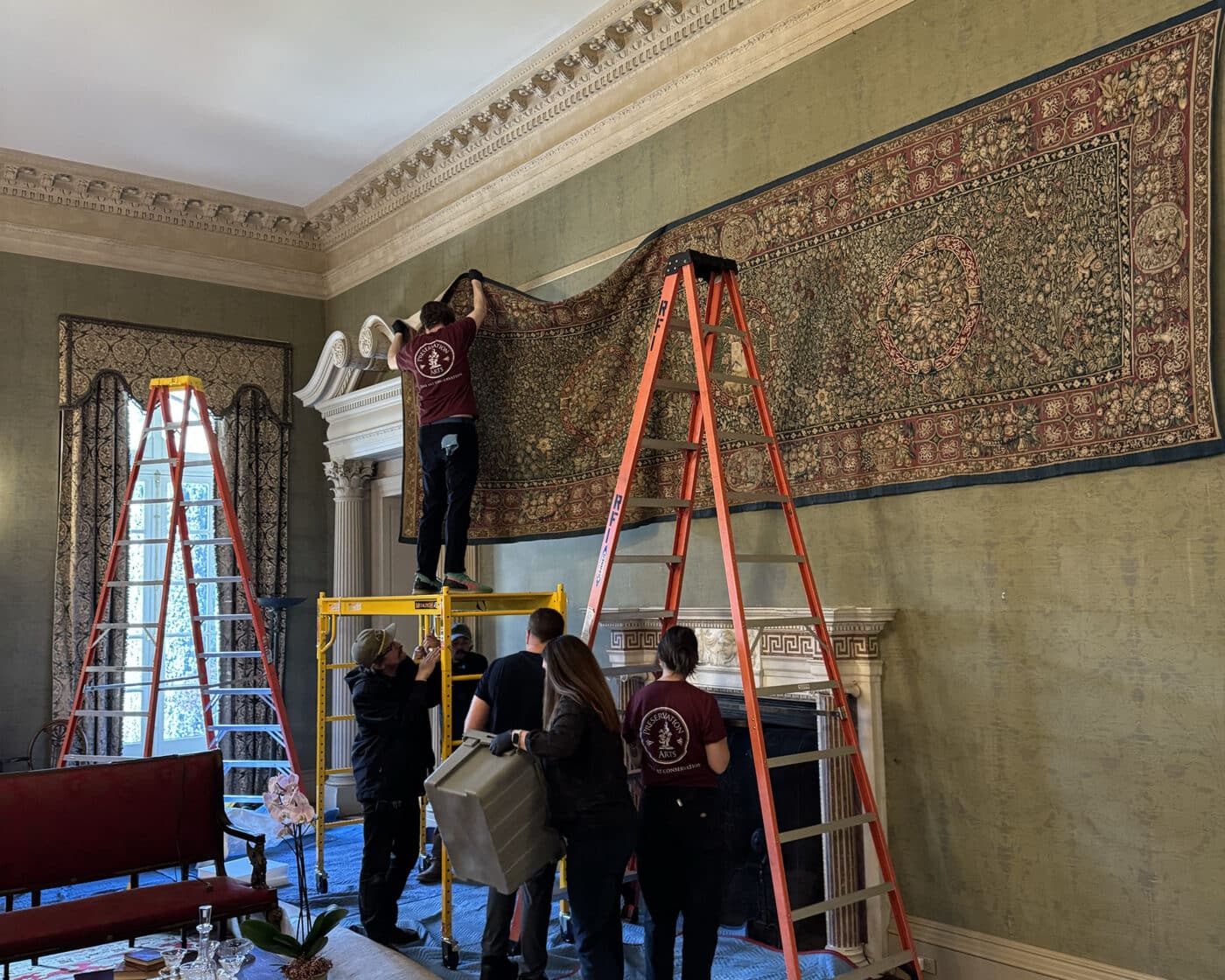Filoli’s Verdure Tapestry: A Centuries-Old Treasure, Restored and Rehung

By Kevin Wisney, Director of Collections & Curator
Caring for a 54,000-square-foot, 100-year-old house filled with antiques and decorative arts spanning centuries is no small feat.
The responsibility of preserving these fragile, irreplaceable objects is both thrilling and humbling. Last year, I launched a new initiative to proactively budget for conservation work on collection items that were due for care. Rather than reacting to emergencies, we could finally get ahead of them. With the help of our longtime partners at Preservation Arts, I began assessing the collection and prioritizing the most pressing needs.

One of those needs was the Verdure Tapestry—a Filoli treasure. It has graced the wall above the Reception Room fireplace since 1917, when Agnes Bourn purchased it at the Panama-Pacific International Exposition in San Francisco. Woven in wool during the second half of the 16th century, this tapestry was originally intended as a table cover.
Its design is a dreamscape of lush greens and blooming plants—hence the name “Verdure,” from the French word for greenery. But the scene is more imagined than real: the plants shown wouldn’t bloom together in nature. It’s a tapestry of botanical fantasy.
Before arriving at Filoli, the tapestry passed through remarkable hands. It once resided at England’s grand Knole House with the Sackville family, and later was part of J.P. Morgan’s legendary collection. When Agnes Bourn brought it to Filoli, she had it hung high above the fireplace. Decades later, Lurline Roth lowered it by a few feet and removed the sconces that once flanked the fireplace below it—a decision that may have saved the textile from long-term light damage.

Fortunately, the tapestry did not require extensive conservation—just expert attention. In Oakland, the team at Preservation Arts removed its linen backing, inspected for pests (none were found), and gave the tapestry a much-needed cleaning. They identified that the mount was placing undue stress on the upper warp and weft threads. These were carefully reinforced, and the mount was adjusted to reduce strain going forward.
Previous repairs—especially along the border—had used thread that faded over time, standing out against the original. To correct this, Preservation Arts dyed new thread to match and used a technique called reversible conservation. This allowed them to gently cover earlier repairs without erasing them, preserving the tapestry’s layered history while stabilizing it for the future.
In April, the Verdure Tapestry returned home, reinstalled in its familiar place above the fireplace. Now freshly conserved, it stands ready to delight another generation of visitors—a vibrant thread in the rich tapestry of Filoli’s story.
